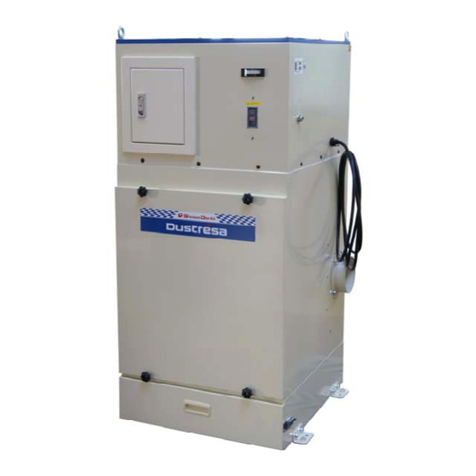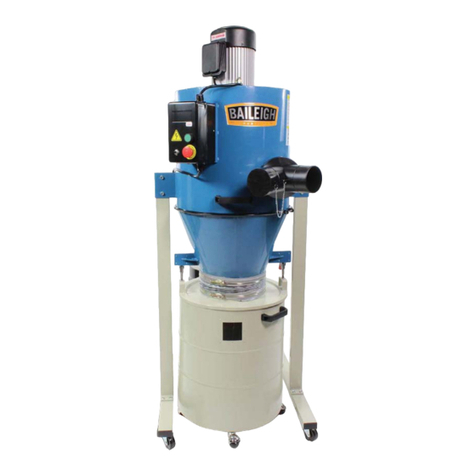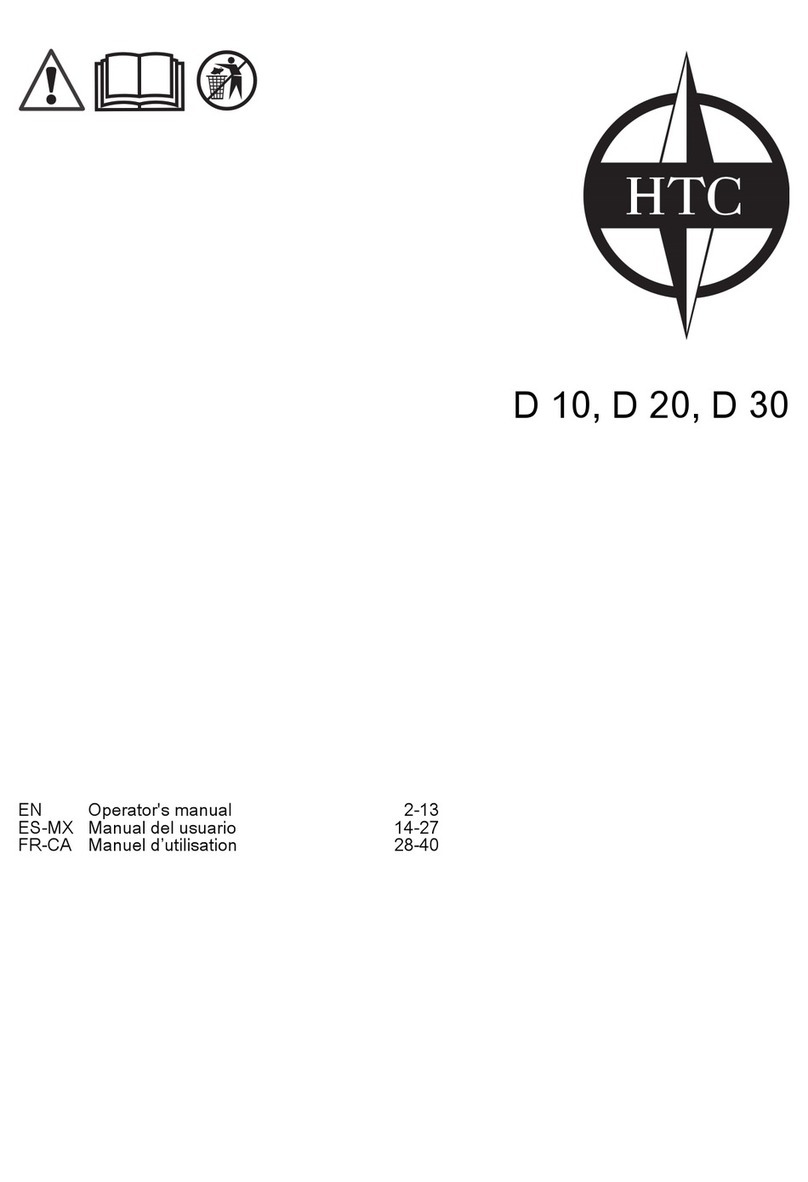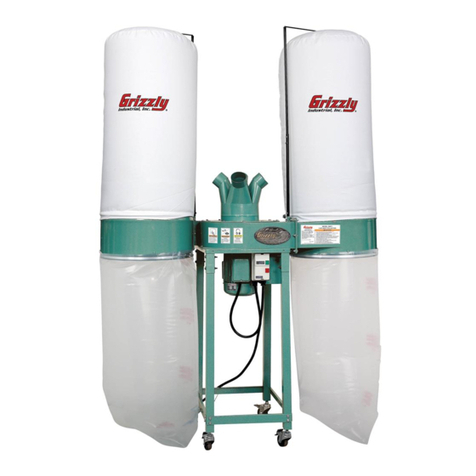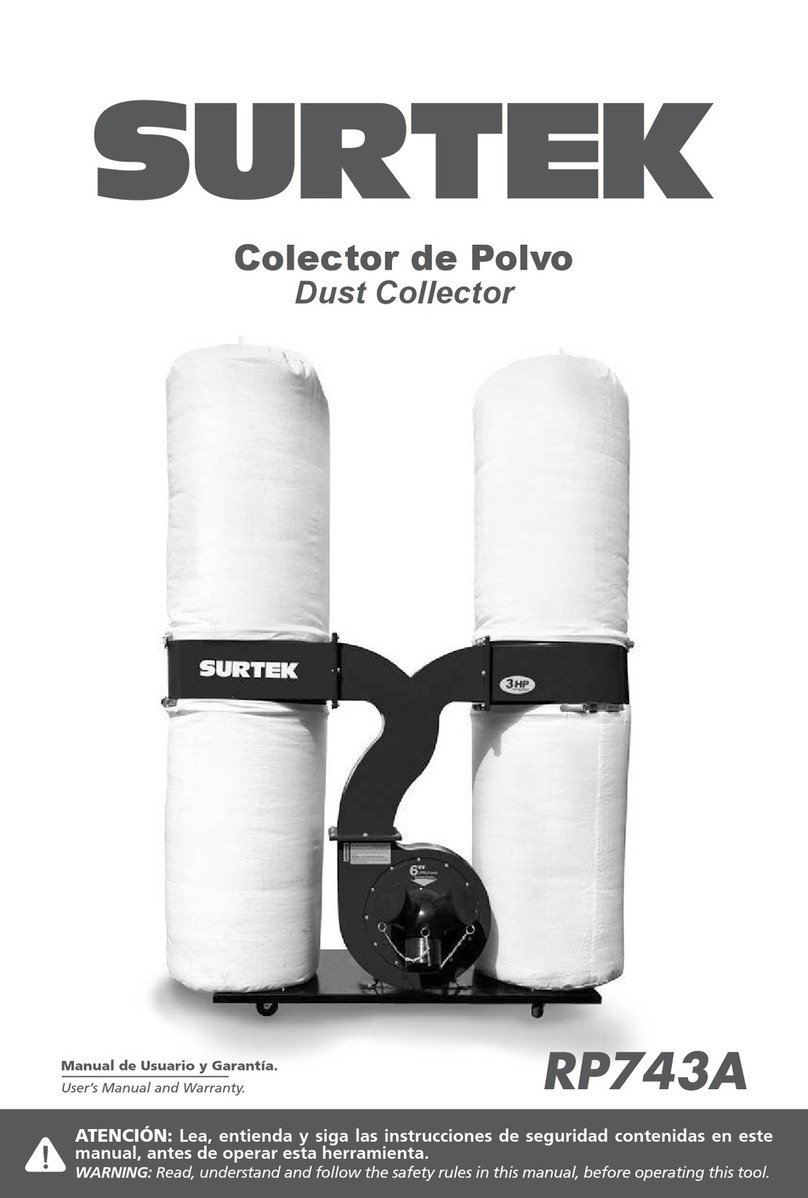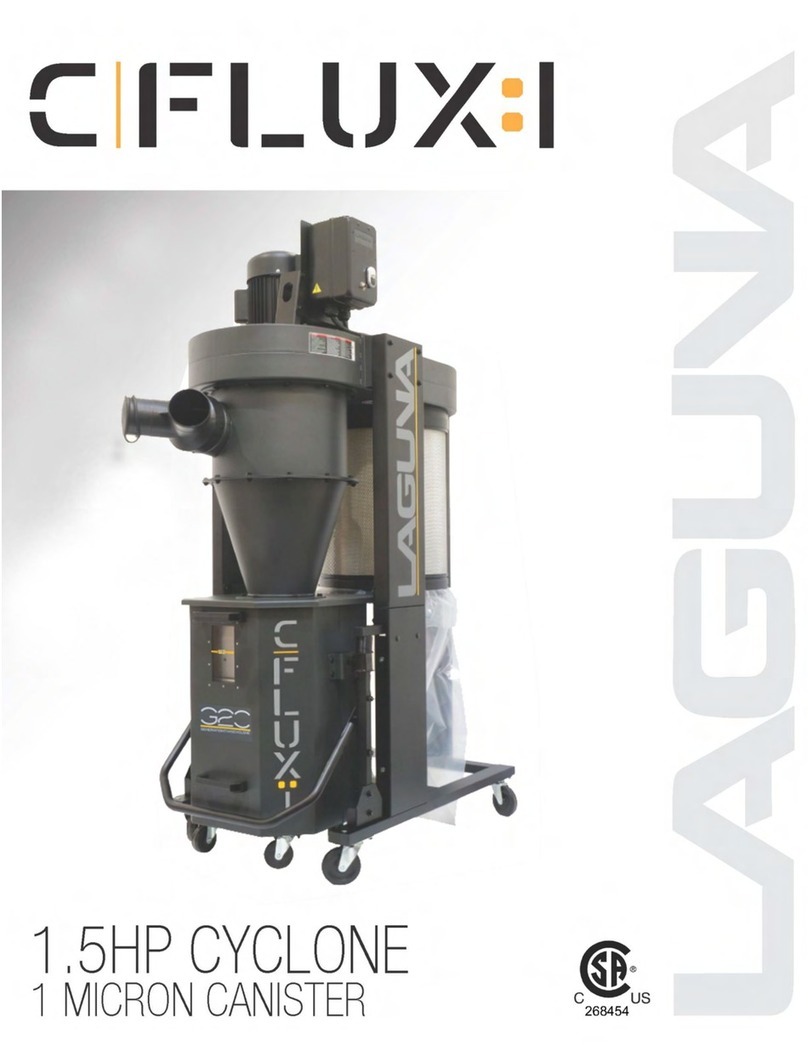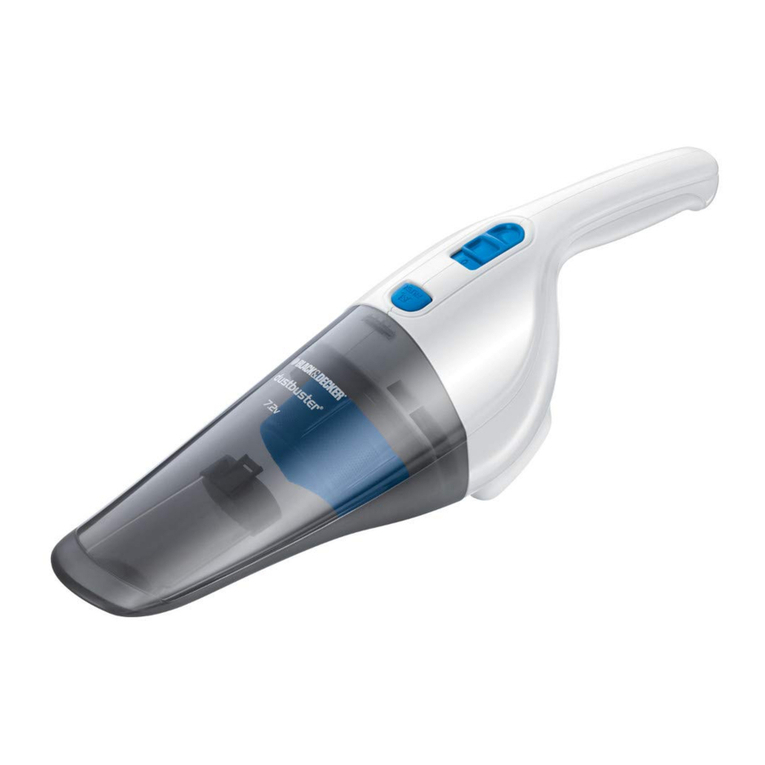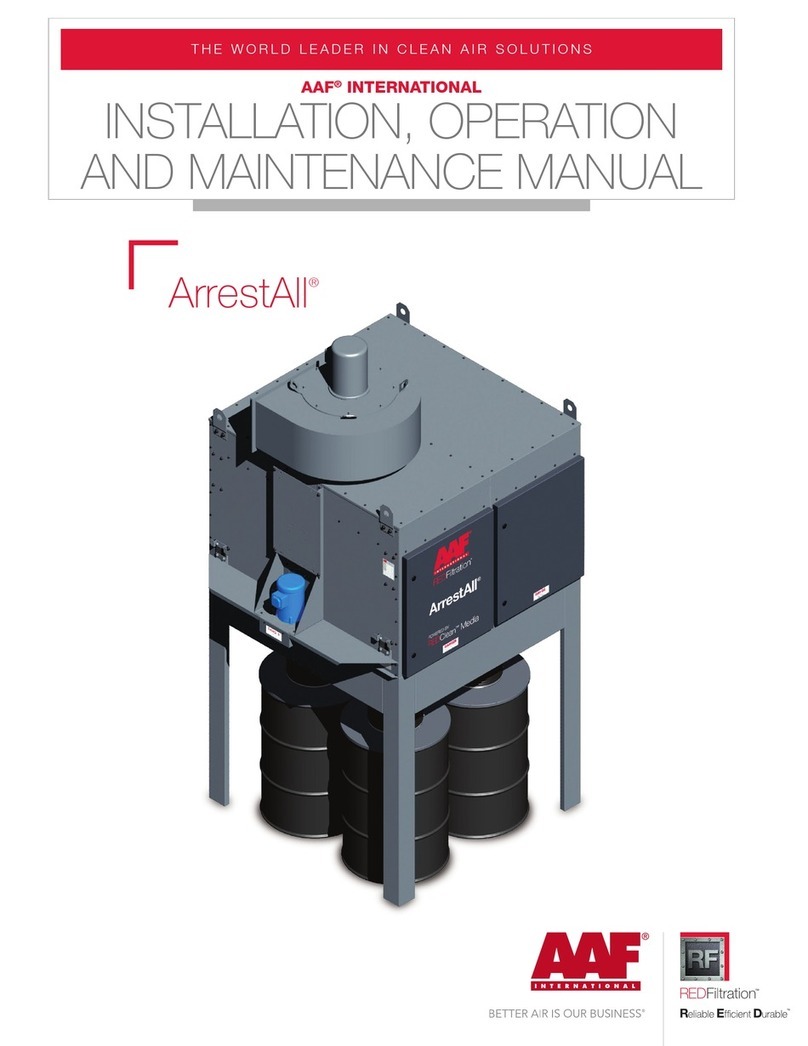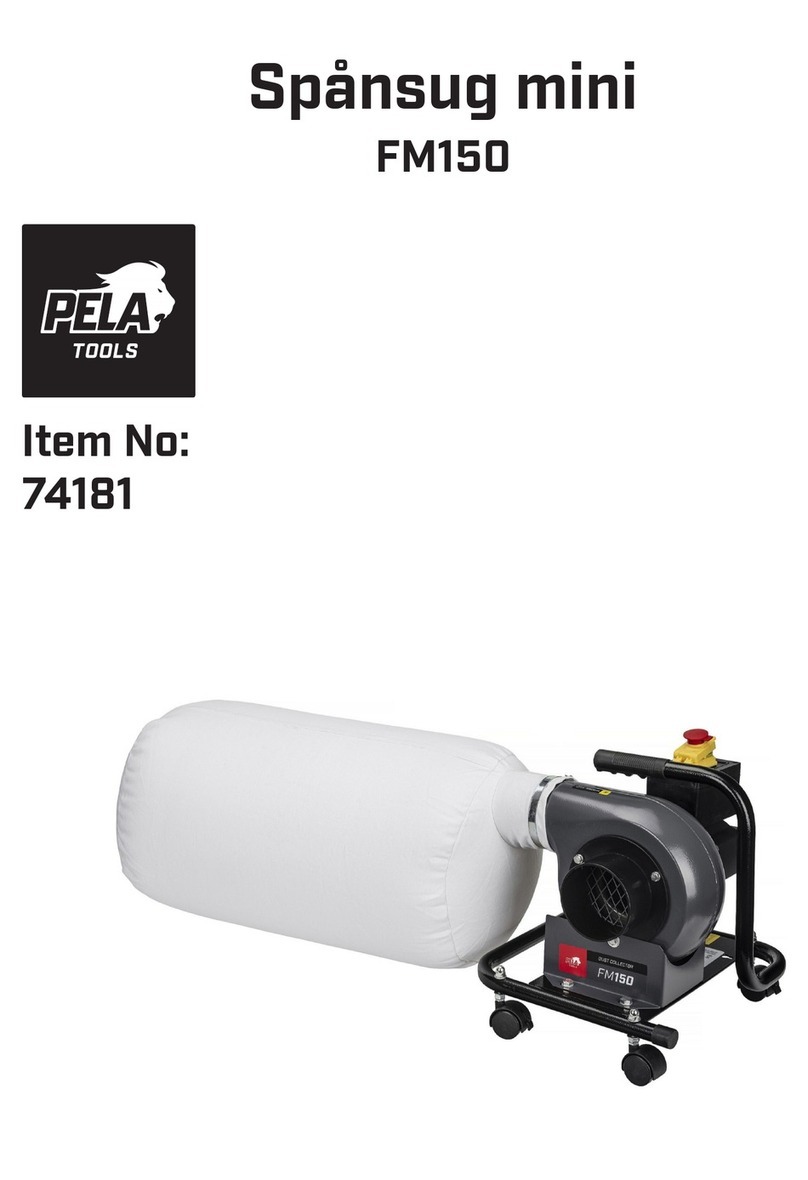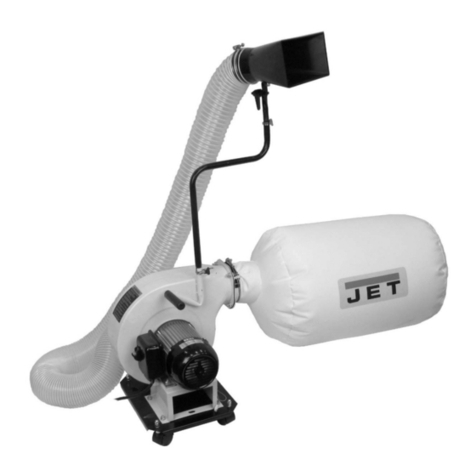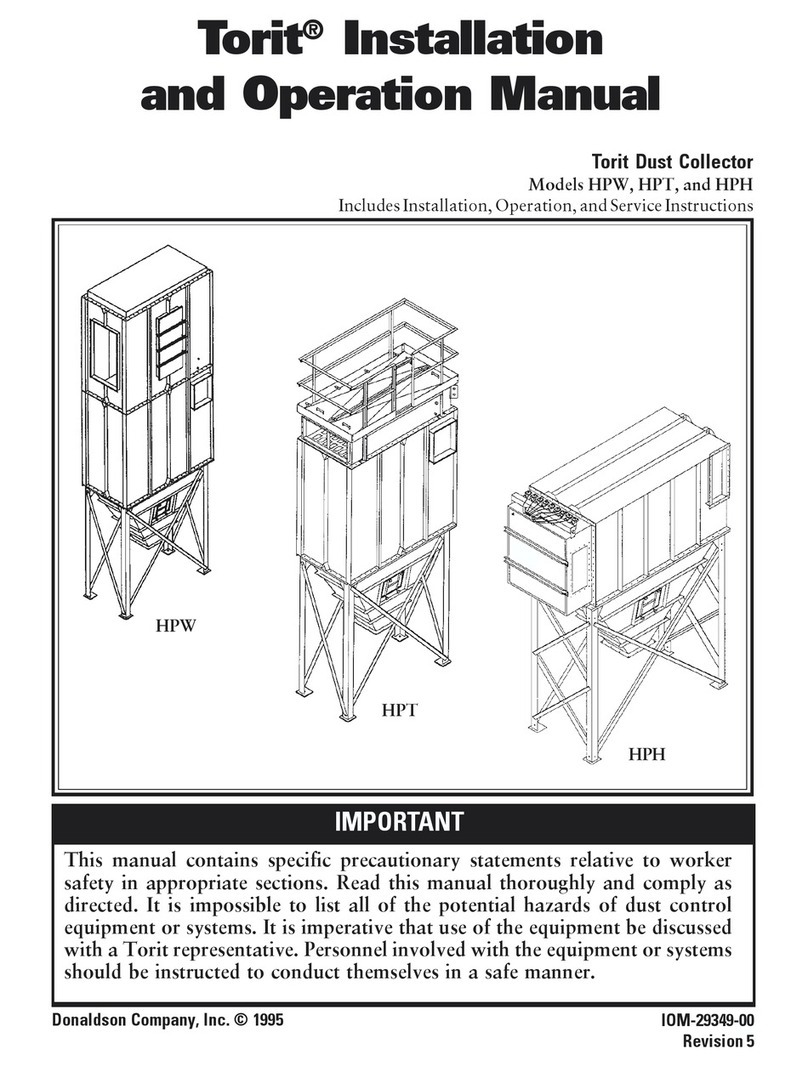Showa Denki Workresa WRM-04H Series User manual

YFWA11A-Y000E
Instruction Manual
Dust Collector with Worktable
Workrésa (WRM)

Introduction
Thank you for purchasing our Showa Denki “Dust Collector with Worktable (WRM).”
We at Showa Denki Co., Ltd., as a special manufacturer of blowers and dust collectors, have
strived to produce products by making the best use of “Flow technology” and “Rotating machine
technology.” WRM is a dust collector with worktable that utilizes these technologies. In order to
demonstrate sufficient performance of this machine and use this machine for a long time without
malfunctions, read this instruction manual well.
Keep this manual in a place easily accessible by workers in charge of maintenance and
inspection. The latest issue of the instruction manual can be downloaded from the homepage of
Showa Denki Co., Ltd. (http://www.showadenki.co.jp/pam phlet_download.html)
This manual describes the details from installation to use method of the duct collector with
worktable.
WRM-04H-□□□(-A) Standard specifications (-A type includes optional air coupler)
WRM-04B-□□□(-A) Simple explosion-proof specifications (-A type includes optional air coupler)
WRM-04S-□□□(-A) Spark countermeasure specifications (-A type includes optional air coupler)
This instruction manual is for standard models. When purchasing a custom-made product,
please comply with the instructions in this manual and observe the terms and conditions of use
included separately.
Workers in charge of handling and maintenance and inspection of this Machine must receive
education and training for this Machine.
Caution marks in this manual
The marks in this manual indicate the following:
This mark indicates that mishandling may cause death and
serious accidents.
This mark indicates that mishandling may cause personal
injuries and property damages.
This mark indicates prohibited items.
This mark indicates items to which attention should be paid.
This mark indicates items that must be done without fail.
WARNING
CAUTION

Table of contents
Page
Chapter 1 Safety precautions -1-
Chapter 2 Equipment Overview -3-
Equipment overview -3-
Structure of this machine -3-
Parts diagram - 3-
Chapter 3 Installation -4-
Installation -5-
Electric wiring -5-
Test run -5-
Chapter 4 Operation -7-
Daily operation -7-
Precautions -7-
Hood -8-
Shakingr -9-
Coupler -9-
Chapter 5 Maintenance and inspection -10-
Inspection item and frequency -10-
Filter cloth replacement -11-
Shaking rope tension adjustment -11-
Size of replacement filter cloth -12-
Troubleshooting -12-
Specifications -13-
Outer dimensions -13-
Chapter 6 Disposal -15-
Chapter 7 Warranty statement -16-

- 1 -
◼
Chapter 1 Safety precautions
Never intake the following:
Lit cigarettes, cigarette butts or ash, fire sources like matches, and other high-
temperature powder dusts.
Sparks generated by sanders, grinders, etc.
The filter cloth is flammable. It may ignite due to sparks, etc., resulting in a fire.
If a fire should occur in this machine, immediately turn off the switch and insert,
through the suction inlet, an extinguishant suitable for the collected materials, then
close both the suction inlet and discharge outlet.
Gasoline, paint thinner, or kerosene cutting oils or cleaning liquids with a
flashpoint lower than 125℃.
Flammable gas, explosive gas, gasoline or other combustible vaporized gas.
There is risk of ignition or explosion by heat generated by sparks or the electric motor
due to internal electric components, static electricity, contact with metal, etc.
Powder dust such as aluminum, carbon or starch posing dust explosion risk
Explosion due to dusts may occur depending on the particle size, concentration, etc.
●Substances that generate heat and change into dangerous substances if mixed.
If different materials are collected in the same machine, a potentially dangerous
chemical reaction may occur. Please responsibly determine if mixed intake is safe for
your materials. If it is dangerous, please use the machine after clearly displaying it
as a dedicated dust collector for each material.
Never operate this machine with the main body front door open. The door may close
due to negative pressure, and cause fingers, etc. to be caught. In addition, the motor
may be overloaded.
Never ride on this machine. Doing so may deform the machine or cause an accident
due to a fall.
When handling dust that may cause an explosion, be sure to use a dust-explosion-proof
product (Simple explosion-proof specifications). When handling high-temperature dust
and sparks generated during grinding, be sure to use a spark-countermeasure model.
Do not use when unable to make sound judgements.
The design life of this product is 8 years, excluding consumable parts. If using for longer, the risk
of failure or malfunction may increase due to aging and deterioration of materials.
WARNING

- 2 -
Never Intake the following, as they may cause malfunction.
High-temperature gas and heat-generating substances
Gas at 40°C or higher that is suctioned in or generated within the machine by heat-
generating materials may cause insulation failure of internal electric components.
Adhesive dusts
The filter cloth may clog if dust adheres to it and cannot be shaken.
Solid materials such as workpieces and tools
These objects may damage the duct, filter cloth, etc.
Fine powder dust such as carbon (5 μm or less)
Powder dust may leak if a standard filter cloth is used. Use a high-performance filter
cloth.
Light powder dust such as feather, cotton, paper and styrene foam dusts
These objects may get entangled internally and suspend without falling.
Highly abrasive powder dust such as glass powder and abrasives
The filter cloth may be perforated due to wear and powder dust may leak.
Furthermore, the duct and main body of the machine may be punctured.
Corrosive gas and mists
The machine main body and parts may corrode.
Do not apply high pressure to this machine with other pressure machines.
Never increase operation speed using an inverter, etc.
Doing so may cause damage to the blower.
Except when reusing the material collected by this machine, dispose of it appropriately
in accordance with the relevant laws and regulations set by national and local
governments. Dispose of old filter cloths and other wastes similarly.
This machine collects 5μm or larger-sized particles with a standard filter cloth and 1μm or larger
particles with an optional high-performance filter cloth. Powder dust amount must be 1g or less per
1 m3/min of air. If the intake powder dust is beyond this performance range, it is possible that dust
will leak through the filter cloth, pressure loss of filter cloth increases, or clogging, etc. will occur.
CAUTION

- 3 -
◼
Chapter 2 Equipment Overview
This machine separates and collects dusts and mists scattered in the worktable hood when
workpiece cutting powder/oil are air-blown or generated when grinding with electric tools. It cannot
process large amounts of powder or mist in a short time, intake liquids not in a mist state, nor
perform shaking during operation. If clogging decreases air volume, stop operating and perform
shaking. Continuous shaking cannot be done.
Structure of this machine
Air containing the collected materials is separated in the main body and filtered by the filter cloth.
Cleaned air passes through the blower to the machine back and exhausted. Filtered dust is shaken
by operating the shaking handle to beat the filter surface with the shaking mechanism. Shaken
dust accumulates on the dustpan and is removed via the front door easily.
Dust explosion countermeasure (simple explosion-proof specifications) models are equipped
with: an antistatic filter medium to prevent static electricity sparks; an explosion outlet which
releases internal pressure in the event of an explosion; a check valve to prevent backflow into the
duct; and an electric motor with specifications equivalent to Japanese increased-safety explosion-
proof specifications.
*Dust explosion countermeasure (Simple explosion-proof specifications) models cannot
completely prevent explosions.
Spark countermeasure specifications machines equip parts making it difficult for high-
temperature dust and sparks from grinding a workpiece with a power tool to reach the dustpan.
Parts diagram
Hood
Switch
Handle
Shaking handle
Power cord
Exhaust port
(rear)
Front door
Caster
Worktable
Protective cover with
acrylic window (openable)
Dustpan
Filter cloth clip
Front door

- 4 -
◼
Chapter 3 Installation
When you receive the product, confirm the product is as ordered by checking the model, voltage,
frequency, etc. on the nameplate. In addition, check accessories. We take all possible precautions
when packing, but if damages from transportation or missing parts are observed, contact your
dealer or our nearest branch or sales office immediately.
Nails are used in the wooden pallets and frames used for packing. Pull them out immediately
after unpacking; there is risk of injury due to protruding nails. Dispose properly of unnecessary
packing materials in accordance with relevant local and national laws and regulations.
Install this machine where the following conditions are met:
Indoors without exposure to rainwater
The Workrésa is a machine for indoor use.
Avoid installation locations easily wet with water, as the water can cause electric shock
or malfunction.
Condensation-free at room temperature
Ambient temperature: 5°C-40°C
Humidity: 80% or less
Horizontally flat without vibration
Installing on a not-flat floor may cause abnormal vibration and cause a fall.
Free of dangerous chemicals nearby
Installing this machine near flammable chemicals, such as gasoline and paint thinner,
or an explosive atmosphere may cause an explosion or fire. Operation near chemicals
generating corrosive gas such as hydrochloric acid and sulfuric acid may cause main
body and parts to be corroded.
Easily accessible for maintenance
Maintain space as shown at left for elimination of collected
materials, filter cloth replacement, and air exhaust.
Unit: mm
High temperature and dew/condensation may cause
electrical component failure or electric shock.
400

- 5 -
Installation
This machine can be easily moved with the equipped casters. However, use the
stoppers on the front wheels to lock the machine during operation. In addition, avoid
operation on a slope. When moving this machine, move it slowly on a flat floor and
be careful not to tip it over.
When lifting the machine, use the two handles provided on either side of the machine.
Do this work with two or more people.
If the exhaust port is blocked, normal suction power cannot be exerted. Maintain a
sufficient space around the exhaust port.
Leave nearby a fire extinguisher suitable for the collected materials.
For the dust explosion countermeasures (simple explosion-proof specifications)
models, be sure to install the explosion emission port in a safe direction away from
workers.
Electric wiring
●Use the power supply designated on the nameplate. Operation using power supply
other than specified may cause malfunction and is extremely dangerous.
Before connecting the power supply, be sure to connect the ground cable.
Use a power supply fuse (circuit breaker) suitable for the startup current.
Use a voltage within ±5% of the rated voltage.
(Temporary fluctuation in voltage: ±10% or less)
Use a current within the rated current.
Never increase operation speed run using an inverter. Doing so may damage the
blower.
Rated Current for Standard Products
100V single-phase
220V single-phase
50Hz
60Hz
50Hz
6.0A
7.8A
2.8A
For three-phase power supply, voltage specifications other than the above in single- or three-
phase, or other custom specifications, please contact us.
Test run
Re-check the following items before a trial or test run:
The power cord and ground cable connection, insulation and voltage within the
specified value:

- 6 -
The main body front door is closed completely:
No tools, bolts, nuts, etc. left on the worktable:
For dust explosion countermeasure (Simple explosion-proof specification) models,
the explosion outlet port lid is not displaced.

- 7 -
◼
Chapter 4 Operation
Daily operation
Operation steps (1) Check that the front door is closed.
(2) For dust explosion countermeasure (Simple explosion-proof
specification) models, ensure the explosion outlet port lid is not
displaced.
(3) Turn on the switch to start operation.
Shutdown (1) Turn off the switch.
(2) Perform shaking after about two minutes and remove the collected
materials accumulated on the dust pan.
Precautions
The switch is equipped with an overload protection device:
If the dust is very fine, at the start of operation, a small amount of dust may leak
temporarily. If dust adheres properly to the filter cloth, there will be no leak. If leaking
does not cease, replace filter with the optional high-performance filter cloth:
Continual operation of the machine will clog the filter and decrease suction power.
Stop operation, shake the filter, and discharge the collected materials:
Shaking and collected materials removal during operation is not possible:
Since the dust pan is fixed with a spring, it catches when pulling it in and out. When
inserting, insert the pan until it clicks back into place.
Be careful not to allow too much collected materials in the dust box. Also, if too
much liquid is stored in the dustpan and spills out, it may leak from the front door.
When removing the collected material, use suitable protective equipment, such as
protective goggles, a dust mask, and gloves.
If using the machine with collected materials accumulated in the machine between
the workbench and the dustpan, the collected materials n may be ignited by sparks.
Perform a trial run and inspect according to instructions if using a machine that has
been in stored or that was shutdown and has not been operated for a long time.
Although the life of filter cloth varies depending on use time, characteristics of powder
dust and dust amount, the usual lifespan is 1 to 2 years. If the suction power is not
restored even after shaking, or shaking becomes heavy, replace the filter cloth.
Filter cloth damage should not occur with normal use, but if it is damaged, stop
operation and replace the filter cloth with a new one. Continuous use with a broken
the filter cloth may cause not only powder dust to leak and be released to the
atmosphere but also the blower to be damaged.

- 8 -
Hood
The door on the hood front side with protective acrylic window can be slid open upwardly. Operate
this machine with the door closed. The blowing speed decreases if the door is slid upward. Also,
do not operate with the protective cover opened just partway. The protective cover with acrylic
window may close suddenly, causing injury,
Protective cover with acrylic window closed
(Recommended state during operation)
Protective cover with acryclic window open
(Wind speed slows down)
Protective cover with acrylic window opened
halfway
(May cause injury)

- 9 -
Shaking
Pull the shaking handle approx. 3 times while supporting the main body with hand to prevent it
from moving. Return the handle so that the handle does not slack.
Coupler (When optionally included)
•The machine is equipped with a coupler for attaching the compressor and air tool hose
couplers.
Coupler Specifications: Nitto Kohki Super Coupler (socket・plug)
•This optional feature can also be installed post-purchase at a later date.

- 10 -
◼
Chapter 5 Maintenance and inspection
Perform maintenance and inspections to prevent malfunctions and accidents and
ensure long life of this machine Be sure to turn off the power supply before inspecting
internally. While performing maintenance and inspection work or replacing the filter cloth,
wear protective glasses, a dust mask, and gloves.
If this machine falls under the Industrial Safety and Health Act (Organic Solvent
Ordinance, Lead Ordinance, Specified Chemicals Ordinance, Dust Ordinance), inspect
this machine according to the periodic self-inspection guidelines specified by law.
Inspection item and frequency
Inspection item
Frequency
Inspection details
Front door
Before
operation
Is the door closed completely?
Dust pan
Have collected materials been discharged?
Motor load current
Once/day
Inspect by ammeter on control panel, etc.
Exhaust condition
Is there any dust leak through the filter?
Vibration of blower
Is there no abnormal vibration or abnormal sound?
Shaking device
Is there no abnormal sound or malfunction?
Filter cloth
attachment
Once/month
Is there no detachment, looseness, breakage, etc.?
Each electric wiring
Is insulation proper? Is there no looseness in the
terminal?
Inside of main body
r
Clean stuck materials or powder.
(Increase inspection frequency depending on use)
Main body
Once/year
Is there no corrosion or apertures/gaps/cracks?
●When cleaning the outer or inner surface of the main body, wipe it with a waste cloth soaked
in water or a neutral detergent. Wiping with a solvent such as paint thinner may cause peeling
or discoloration of the coated surface.

- 11 -
Filter cloth replacement
(1)
Pull out the dust pan, then pull up the
filter cloth clip toward you.
(2)
Pull out the filter cloth and lower the
front side of the filter cloth. Remove
filter cloth.
(3)
Insert a new filter cloth in the direction
shown in the following photo. Check
that it is inserted into the groove at the
back before pushing it in fully.
(4)
Lift up the front side of the filter cloth
and secure it with filter cloth clip. Insert
the dustpan fully.
Shaking rope tension adjustment
If the shaking handle becomes loose or the filter cloth is replaced, adjust the shaking rope tension.
(1)
Loosen the two wing nuts for the rope
holder and let the shaking handle come
in contact with the main body.
(Remove the filter cloth.)
(2)
While pulling the rope end, rotate the
rope holder in the curved arrow
direction by 2 to 3cm.
(3)
Tighten the wing screws of the rope
holder while pulling the rope.
Detail of rope holder
If the rope breaks or is worn severely, replace it with a new one.
Pay attention to
the direction.
Rope
Rope holder
Note: Even after rope tension adjustment, some air
leakage may occur where the rope passes through, but
that will not affect the performance of this machine.

- 12 -
Replacement
rope
Starter rope
(Nylon solid braided rope)
Φ4 mm 50-60 cm
Ropes are also available at home improvement stores, etc.
Size of replacement filter cloth
Size of filter cloth
Number of
cloths used
420 mm x 420 mm x 75 mm
1
Use our genuine filter cloth for replacement.
Wear protective glasses, a dust-proof mask, and gloves during replacement work.
Troubleshooting
Malfunction
Cause
Solutions and Countermeasures
Blower motor
does not start.
•Power supply is not
turned on
•The thermal protection
has activated.
•Motor failure
•Turn on the power supply
•Investigate root cause, resolve issue, and
restart the machine.
•Inspection or replacement (Consult us.)
Abnormal sound
from the blower
Abnormal
vibration
•Damaged motor bearings
•Contamination by foreign
matter
•Impeller imbalance
•Replacement of bearing(or motor
replacement)
•Removal of foreign matter
•Cleaning of impellers
•Imbalance correction (Consult us,)
Dust leakage
•Damaged or detached
filter cloth
•Deterioration of packing
•Too fine powder dust
•Replacement or reattachment of filter cloth
•Packing replacement
•Replace current filter with high-performance
filter.
Weak suction
power.
•Suction duct etc. is
clogged or blocked.
•Clogged filter cloth
•Remove blockage
•Refer to the next item
Clogged filter
cloth
•Aging filter cloth
•Unsuitable dust
characteristics
•Replacement of filter cloth
•Other measures required (Consult us.).

- 13 -
Specifications (Standard specifications, Spark countermeasure specifications)
Frequency
50Hz or 60Hz
Hood face velocity
1.2m/sec
Body dimensions
545mm 537mm H1281mm
(H1476mm when protective cover with acrylic window is fully
open)
Body mass
70/68kg (Spark countermeasure type: 72/70kg)
Outer dimensions (mm)

- 14 -
Specifications (Simple explosion-proof specifications)
Frequency
50Hz or 60Hz
Hood face velocity
1.2m/sec
Body dimensions
545mm 537mm H1281mm
(H1476mm when protective cover with acrylic window is fully
open)
Body mass
74/72kg
Outer dimensions (mm)

- 15 -
◼
Chapter 6 Disposal
Collected materials
Properly dispose in accordance with relevant national and local laws and regulations.
Used filters
Properly dispose in accordance with relevant national and local laws and regulations.
Waste cloth for cleaning containing collected materials
Properly dispose in accordance with relevant national and local laws and regulations.
Materials no longer needed post-replacement
Properly dispose in accordance with relevant national and local laws and regulations.
Disposing of this machine
Remove the collected material adhering to the machine and recycle the machine as
metal waste. Properly dispose of filters and waste clothes for cleaning in accordance
with relevant national and local laws and regulations.

- 16 -
◼
Chapter 7 Warranty statement
If a malfunction of the machine occurs within the warranty period despite normal usage conditions
in accordance with cautions in the instruction manual and labels on the main body, we will repair
the product free of charge according to the contents of this warranty statement.
Warranty period
The warranty period shall be 12 months after the date of delivery.
Warranty coverage
If a malfunction occurs under normal use conditions within the warranty period due to a
manufacturing defect, we will repair or replace the parts in question free of charge.
However, secondary loss resulting from the malfunction such as opportunity or operation loss
are not covered by this warranty.
Repair or replacement costs will be charged in the following cases, even within the warranty period.
Malfunctions and damages due to improper use and repair or modification not in accordance
with the cautions in the instruction manual, attached labels, etc.
Malfunctions and damage due to transportation, drop by mishandling, etc. after purchasing
Malfunctions and damages due to environmental factors such as fire, earthquake, storm and
flood damage, lightning strike or other natural disasters, salt damage, pollution, abnormal
voltage, or use of power supply (voltage, frequency) other than the specified, etc.
Malfunctions and damages due to repair and modification by parties other than our company
(including drilling holes into the product)
Malfunctions and damages due to use of parts other than specified by our company
Malfunctions and damages due to powder dust intake other than as was discussed and
consulted with our company
Malfunctions and damages due to damage done to the filter cloth and packing by intake of
sharp materials
Problems such as discoloration, wear, or marks due to aging or use.
Malfunctions or damages induced by failure to perform maintenance and inspections as
specified in the instruction manual
Replacement of consumable parts such as filter cloth and packing.
* Note
(1) The content of this instruction manual is subject to change without notice.
(2)Every effort has been made to ensure the contents of the manual are correct. However, if
there is an unclear point, error or omission, contact our nearest branch or sales office.
(3) If the frequency of power supply is changed due to a change in place of use, the fan must be
replaced. Contact our nearest branch or sales office.
(4) When making an inquiry, please inform us of the model and manufacturing serial number
listed on the product nameplate.

Notes :We are not responsible for any accident or malfunction caused by usage not in accordance with
this manual, or improper repair or remodeling.
Business Promotion Dpt.
1-25 Shinden Kita-machi, Daito-city, Osaka, Japan 574-0052
Tel: +81-72-870-5708 Fax: +81-72-870-7243
Email: sales@showadenki.co.jp
http://www.showadenki.co.jp
This manual suits for next models
5
Table of contents
Other Showa Denki Dust Collector manuals
Popular Dust Collector manuals by other brands
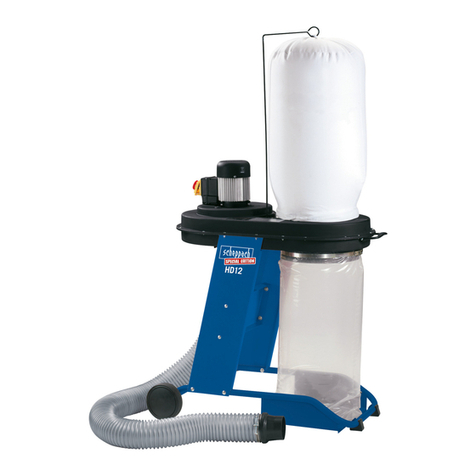
Scheppach
Scheppach HD12 instruction manual
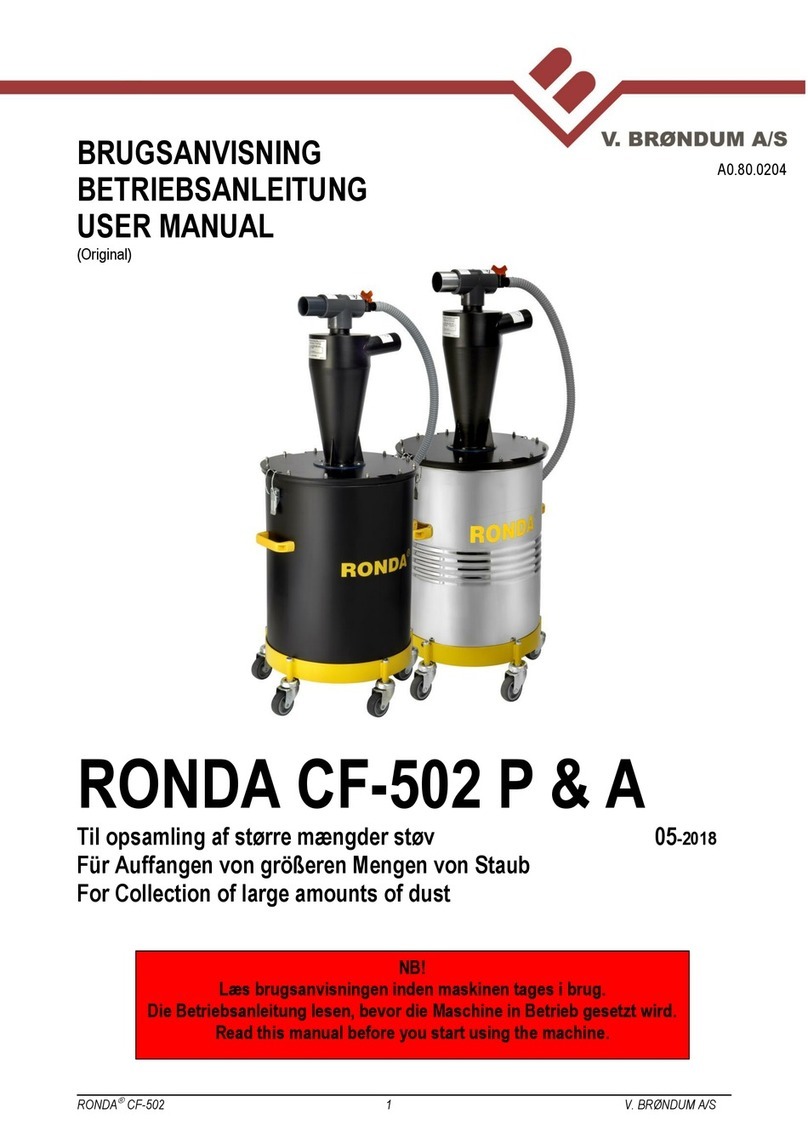
V.Brøndum
V.Brøndum RONDA CF-502 Series user manual

Black & Decker
Black & Decker BDH7200M instruction manual
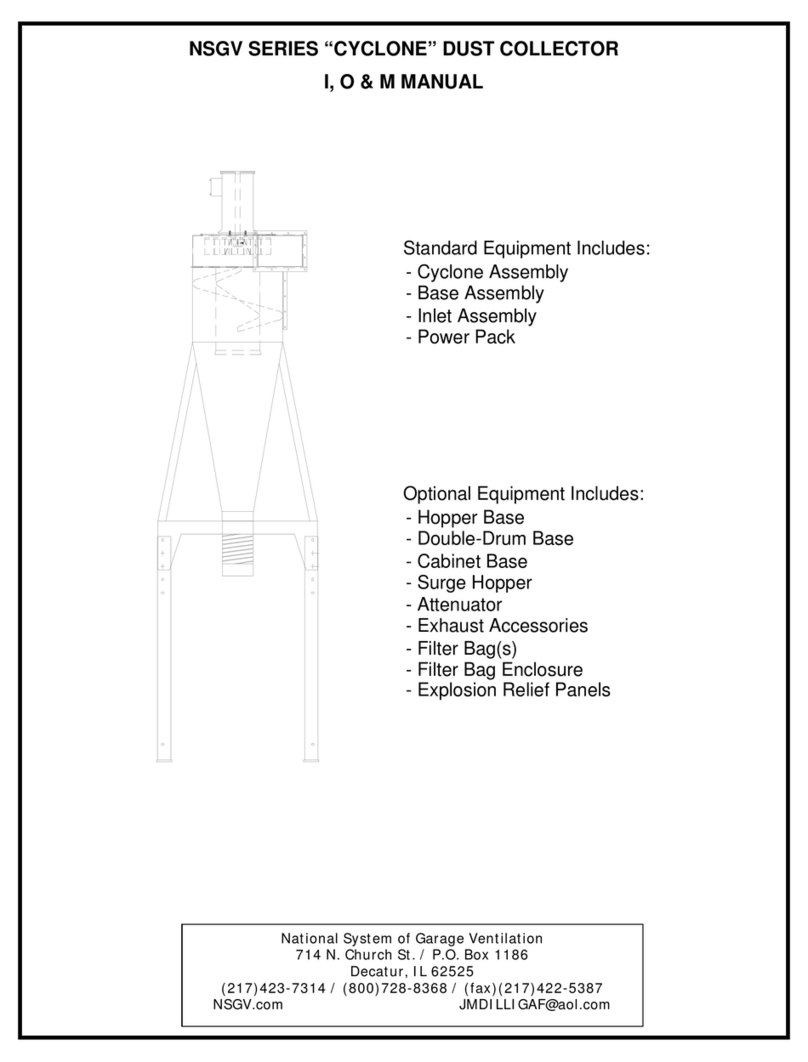
NSGV
NSGV CYCLONE Series manual
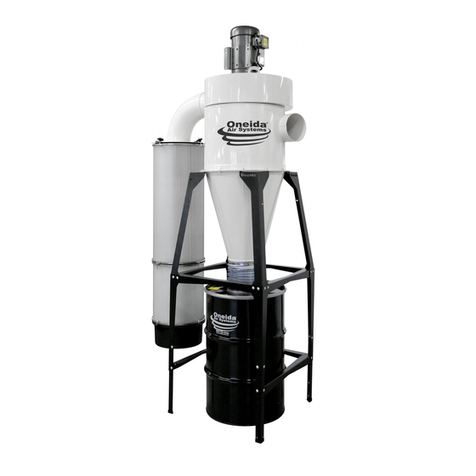
Oneida Air Systems
Oneida Air Systems 5HP High Pressure Dust Collector owner's manual
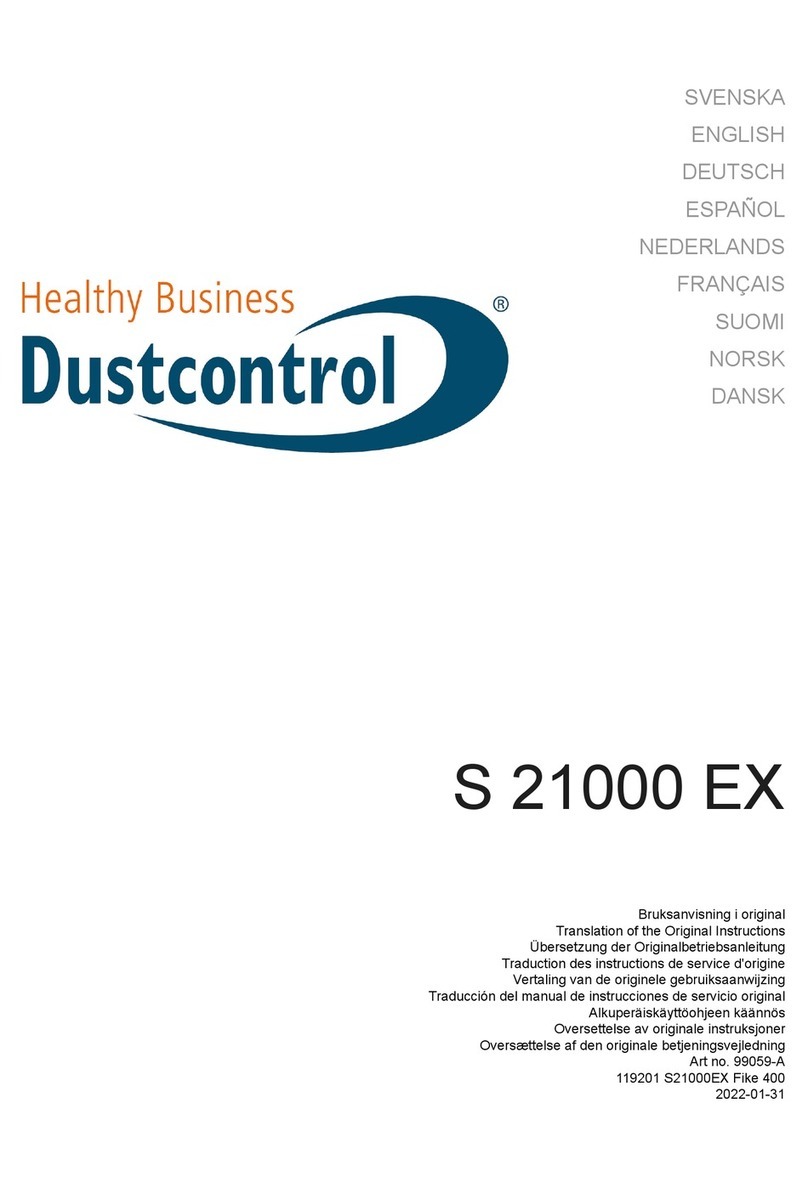
Dustcontrol
Dustcontrol S 21000 EX manual



